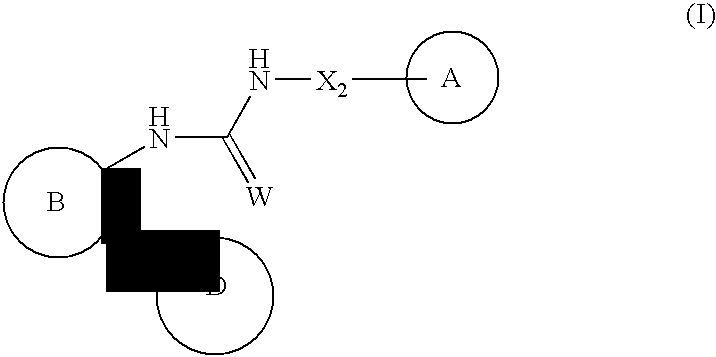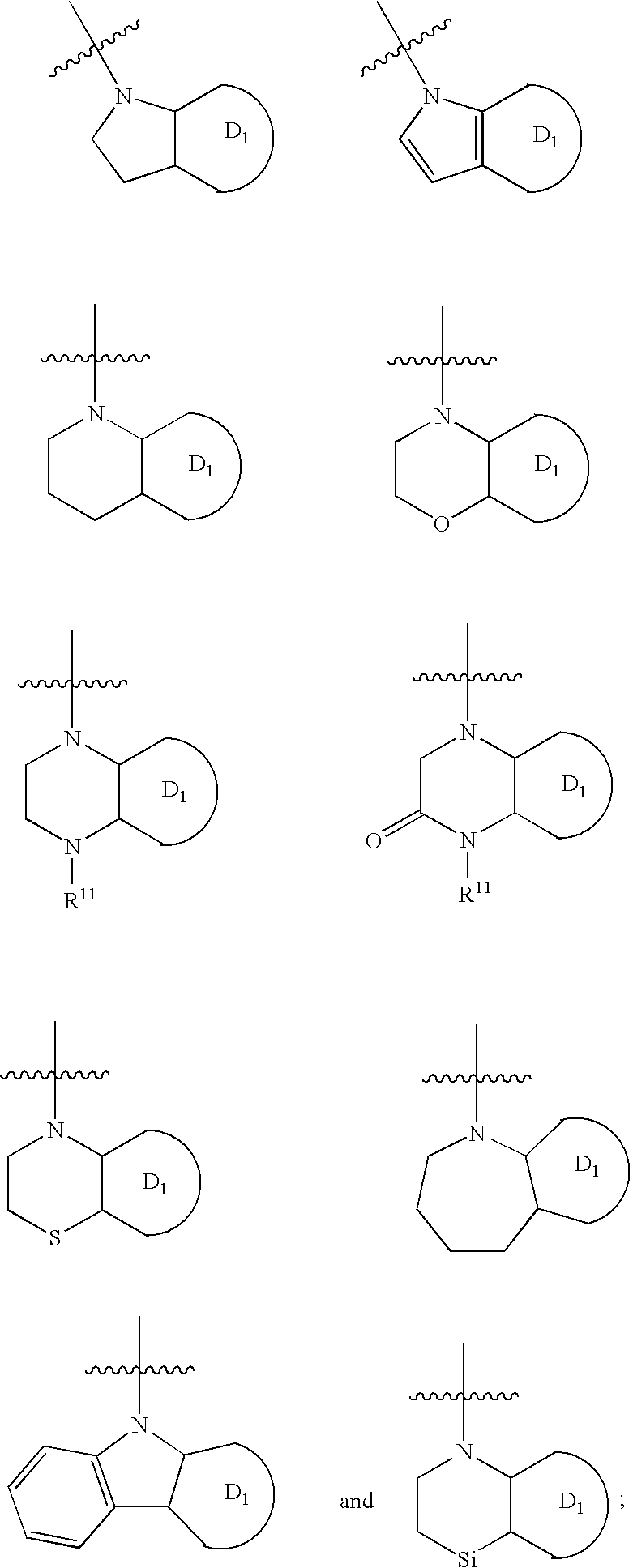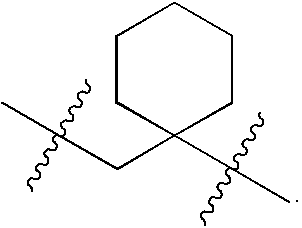Urea antagonists of P2Y1 receptor useful in the treatment of thrombotic conditions
a technology of p2y1 receptor and urea, which is applied in the field of ureas, can solve the problems of in vivo study of the pharmacological properties of the antagonist, and achieve the effect of reducing the risk of thrombosis
- Summary
- Abstract
- Description
- Claims
- Application Information
AI Technical Summary
Benefits of technology
Problems solved by technology
Method used
Image
Examples
example 12
1-[2-(3-Methyl-indol-1-yl)-pyridin-3-yl]-3-(4-trifluoromethoxy-phenyl)-urea
[0359] 12a. 3-methyl-1-(3-nitro-pyridin-2-yl)-1H-indole VII: 2-chloro-3-nitro-pyridin I (317 mg, 2 mmol) and 3-methylindole VI (262 mg, 2 mmol) were dissolved in dry DMF (3.5 mL), and then Cs2CO3 (780 mg, 2.4 mmol) was added. The mixture was heated with stirring at 120° C. at a Personal Chemistry Microwave reactor for 700s. The Cs2CO3 was filtered off. The mixture was diluted with EtOAc (20 mL) and washed with water, 1×5 mL, and 5% LiCl solution, 3×5 mL. The solution was dried over Na2SO4, the solvent was removed in vacuo. The crude product was purified by silica column using the ISCO machine system to give 3-Methyl-1-(3-nitro-pyridin-2-yl)-1H-indole.
[0360] 12b. 2-(3-methyl-indol-1-yl)-pyridin-3-ylamine VIII: The compound VII was reduced to VIII by same procedure used for the preparation of IV.
[0361] 12c. Example 12: To the product VIII (12 mg, 0.053 mmol) were added phenylisocyanates IX (0.15 mmol) in dry...
example 15
1-[2-(3-Methyl-2,3-dihydro-indol-1-yl)-pyridin-3-yl]-3-(4-trifluoromethoxy-phenyl)-urea
[0363]
[0364] 15a. Preparation of X: the product VII (172 mg, 0.68 mmol) was dissolved in TFA (3 mL), and then NaCNBH3 (250 mg, 4 mmol) was added in portions. The mixture was stirred at rt for 75 min. The solvent was removed. The compound was dissolved in saturated NH4Cl solution and extracted with EtOAc, dried over Na2SO4, and the solvent was removed in vacuo. The product was purified by prep-HPLC using CH3CN / H2O / TFA solvent system to yield a brown oil X (52 mg, 30%).
[0365] 15b. Preparation of XI: Compound X (25 mg, 0.1 mmol) was dissolved in methanol (2 mL), a small spatula of 10% Pd / C was added as catalyst and hydrogenated at 40 PSI for 80 min. The catalyst was removed by filtration through a bed of Celite® and the solvent was removed speedvac to yield a dark brown solid XI (13 mg, 50%).
[0366] 15c. Example 15: Compound XI (13 mg, 0,05 mmol) was dissolved in dry THF (1 mL), and then 4-(trifluo...
examples 16-19
[0368] A. 2-Fluoronitrobenzene XII (57 mg, 0.4 mmol), 3-methylindone VI (53 mg, 0.4 mmol) and 18-crown-6 ether (106 mg, 0.4 mmol) were dissolved in dry DMF (1.2 mL), and then anhydrous K2CO3 (65 mg, 0.45 mmol) was added. The mixture heated at 160° C. for 1000s at a Personal Chemistry microwave reactor. The K2CO3 was removed by filtration, the DMF was removed in vacuo. The mixture was dissolved in EtOAc (4 mL) and washed with H2O, 2×1 ml, and 1N HCl, 1×1 mL, dried over Na2SO4. The solvent was removed in vacuo to yield a light brown solid XIII, which was used directly in the next reaction.
[0369] B. Preparation of XIX: Compound XIII was dissolved in 1:1 MeOH:EtOAc mixture (3 mL), a small spatula of 10% Pd / C was added. The compound was hydrogenated at 40 PSI for 2 h. The catalyst was removed by filtration through a bed of Celite®, the solvent was removed in speedvac to yield a brown oil XIX (90 mg, 100% for 2 steps).
[0370] C. Preparation of Examples 16-19: To the product XIX (22.5 mg,...
PUM
| Property | Measurement | Unit |
|---|---|---|
| Carrier mobility | aaaaa | aaaaa |
| Volume | aaaaa | aaaaa |
| Electrical conductance | aaaaa | aaaaa |
Abstract
Description
Claims
Application Information
 Login to View More
Login to View More - R&D
- Intellectual Property
- Life Sciences
- Materials
- Tech Scout
- Unparalleled Data Quality
- Higher Quality Content
- 60% Fewer Hallucinations
Browse by: Latest US Patents, China's latest patents, Technical Efficacy Thesaurus, Application Domain, Technology Topic, Popular Technical Reports.
© 2025 PatSnap. All rights reserved.Legal|Privacy policy|Modern Slavery Act Transparency Statement|Sitemap|About US| Contact US: help@patsnap.com



